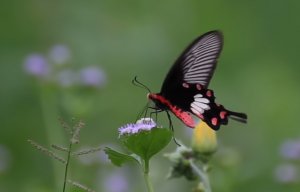
Launch of Design for Decomposition
Designers of performance apparel are being urged to look to nature for inspiration when developing their ranges, according to a new report from Textiles Intelligence.

19th June 2015
Innovation in Textiles
|
UK
Designers of performance apparel are being urged to look to nature for inspiration when developing their ranges, according to a new report from the global business information company Textiles Intelligence – Biomimicry: science of nature inspires design of high-tech performance apparel.
This process, known as biomimicry, is being driven in part by the need to make performance apparel items more environmentally sustainable and, in particular, recyclable at the end of their useful lives. This is not easy at present as performance apparel is becoming increasingly sophisticated and is being manufactured from a variety of polymeric fibres and other materials.
Advocates of biomimicry point to the fact that animals, insects, plants and other living organisms have survived and adapted in dynamic environments by evolving over billions of years, and many natural adaptations have proved to be more effective than man-made solutions.
The wing of the morpho butterfly, for example, has inspired developers to produce fabrics in vivid colours without the use of pigments or dyes. In Japan, Teijin Fibers has developed a chromogenic fibre called Morphotex by arranging polyester and nylon fibres in 61 alternating layers.
Many plants and insects have surfaces with water repellent properties which have provided inspiration for the development of water repellent and stain repellent materials for use in hunting outfits, military uniforms, rainwear and skiwear.
Schoeller Technologies in Switzerland has copied the self-cleaning properties of the lotus leaf in its development of NanoSphere – a finishing process which is said to be one of the most functional and sustainable water repellent treatments on the market, as well as being one of the safest. It has also developed ecorepel – a water repellent finish made from long chain paraffins which are biodegradable.
Schoeller Technologies has also looked to pine cones for inspiration in the development of a product called c_change – a windproof and waterproof hydrophilic membrane with a flexible polymer structure which reacts independently to changing temperatures. At high temperatures, when body moisture levels rise, the structure of the membrane opens to allow excess heat and moisture to escape. At cooler temperatures the structure contracts, thereby helping the body to retain heat and prevent chilling.
Researchers in the textile industry have also taken inspiration from the ability of birds and polar bears to remain warm in cold or even freezing temperatures in the design of thermal insulation garments.
One team of scientists has even created a self-repairing water repellent fabric for use in the manufacture of garments which are designed to be worn by fishermen and sailors. The fabric’s surface features microcapsules containing a glue-like substance. When the fabric is damaged, the microcapsules rupture and the substance is released and subsequently hardens, thereby repairing the damage.
Other properties inspired by nature include antimicrobial efficacy, bioluminescence, camouflage, drag reduction, dry adhesion – inspired by the toe pads of the gecko – and high strength.
Specialists in solutions inspired by nature for the performance apparel industry are continuing to make valuable new discoveries. This is thanks in no small measure to advances in technology – especially nanotechnology – which have enabled such specialists to probe more deeply into biological mechanisms.
These discoveries will no doubt pave the way for the introduction of new types of fabrics and garments which are smart and sustainable.
Biomimicry: science of nature inspires design of high-tech performance apparel was published by the global business information company Textiles Intelligence and can be purchased by following the link below:
Biomimicry: science of nature inspires design of high-tech performance apparel
Other recently published reports from Textiles Intelligence include:
Performance apparel markets – product developments and innovations, (4Q, 2014)

Business intelligence for the fibre, textiles and apparel industries: technologies, innovations, markets, investments, trade policy, sourcing, strategy...
Find out more